Week 112 - Kotor and slowing down
Slowing down for winter in Porto Montenegro aboard our boat Matilda.
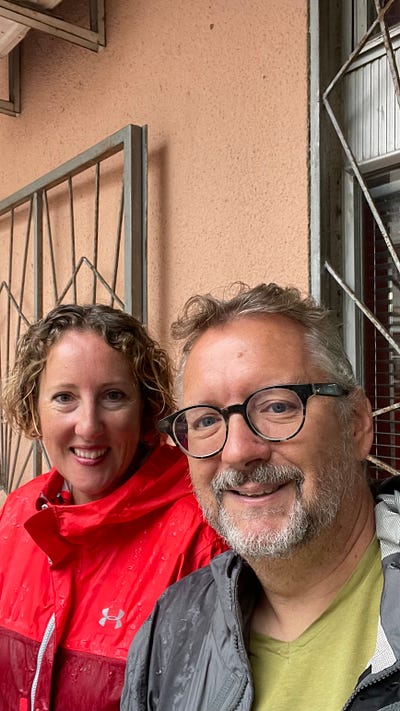
Slowing down for winter in Porto Montenegro and a visit to Kotor
The general mood amongst all the liveaboards we are meeting in Porto Montenegro seems to be “it’s nice to stop for a bit”. It’s a feeling that we have too. When you’re constantly on the move, it’s a challenge to keep up with maintenance, find the right people to fix things, have parts delivered and tackle major projects. It’s also nice to stop obsessing about the weather beyond “will it rain” or “is it sunny”.
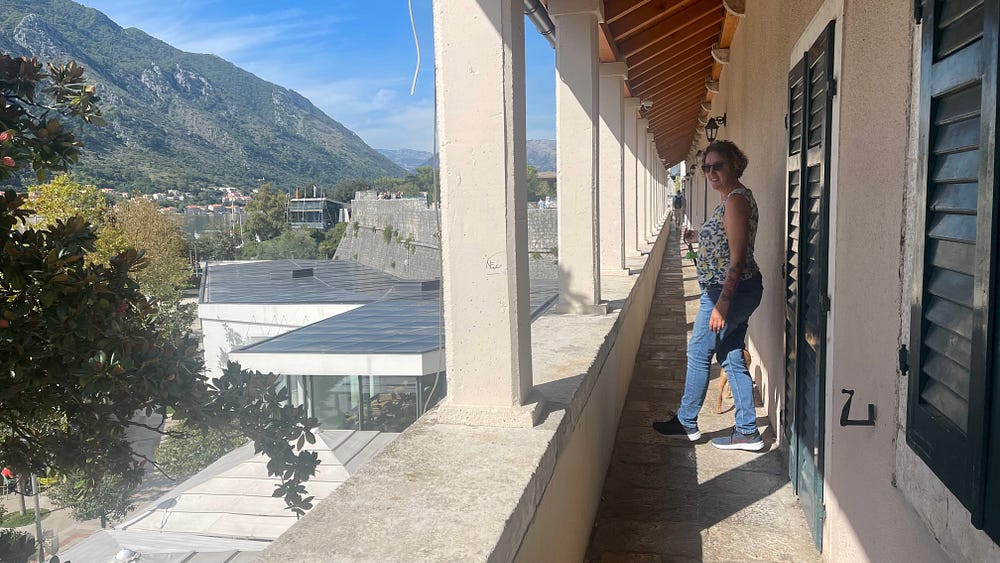
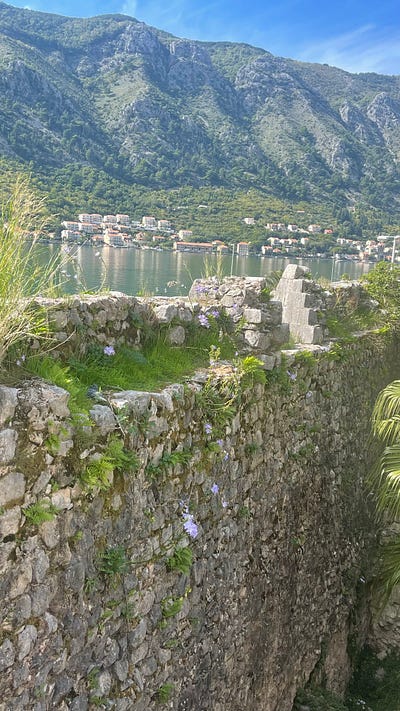
Of course we love cruising around and exploring, but there’s also a simple pleasure in “getting to know the neighbours” because they aren’t going to disappear next week, or spending a bit more time baking because we don’t have to get underway to make the next destination before the weather closes in.
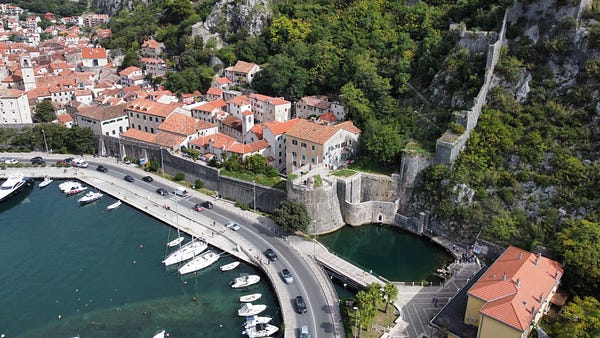
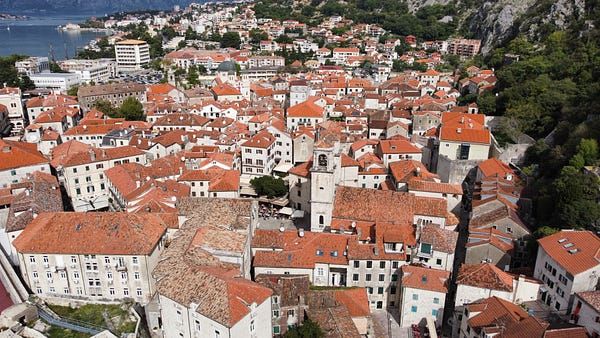
It’s also novel for us to have a base too. On Monday in Kotor the weather looked like it was going to get wet and a little windy and when we were thinking about where to stop for that, we realised that we of course had our berth back at the marina which was paid for, so we simply “headed home”. We invited a friend Chris to join us for the day cruise and explored a little bit of the bay on our way.
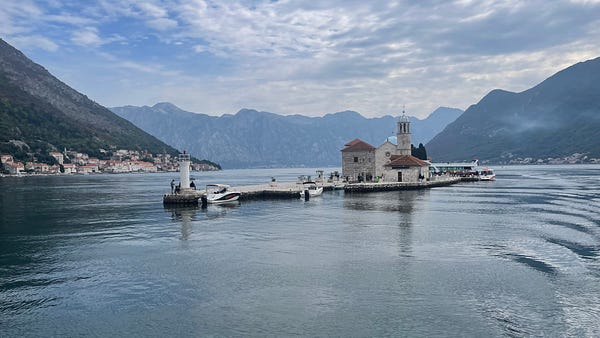
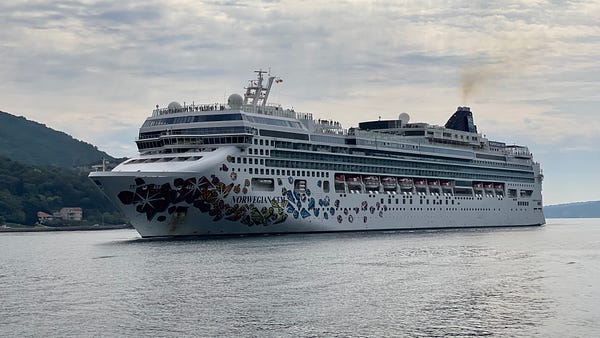
Throughout the week more boats are arriving to settle in for the winter season and we’ve now found about six other Australian boats who are all here. Of course Montenegro is a popular wintering destination in this part of the Mediterranean because it’s outside of the dreaded Schengen zone, so it attracts a lot of Aussies (and now Brits) who want to stay on their boat over winter but not burn the limited time they have to spend in places like Italy and Greece.
With around 15 to 20 full time liveaboards here, we’re getting to know quite a few people. We’re spread apart enough that we aren’t in each other’s back pockets, but we also frequently now bump into couples we know as we wander the streets of Tivat or are hopping on and off other peoples boats for a coffee or a quick tour (generally sailors are very keen to show off their boat and very keen to check out someone else’s).
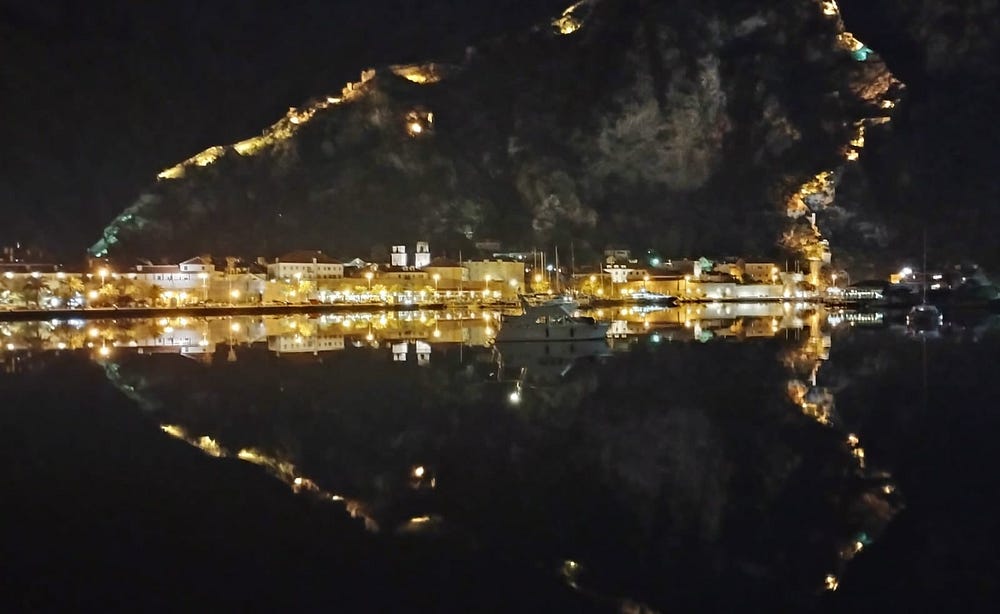
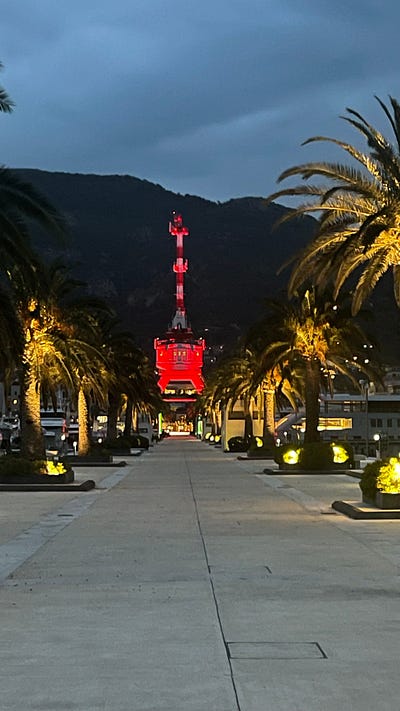
With the rain it was an opportunity to tackle some indoor projects, the first of which was tracking down and fixing a fresh water leak that’s been going on for about a month or more. As with a lot of boat jobs, there is really three separate phases to any given repair.
- Step 1: Work out what the heck is going on.
- Step 2: Repair it.
- Step 3: Add everything else you found that’s broken back to the repair list.
Step 1: Work out what the heck is actually going wrong. This is usually a lot more complicated than you might think. In this case we knew we had a water leak because the freshwater pump would go off by itself every few hours (which means the pressure inside the lines is dropping a.k.a a leak). But we couldn’t find where. We started with the taps — no drips, so it wasn’t anything like a washer. In conjunction with the pump cycling, the front bilge pump was also occasionally cycling, which suggested the leak was somewhere in the forward section of the boat, I inspected underneath cupboards and nothing obvious at all.
When we finally stopped in the marina and the boat settled, I was able to properly inspect it and I found water trickling from the rear of the boat into the front bilge. Ah hah! The leak wasn’t forward after all. Now we start breaking down what’s changed at the rear of the boat — I “fixed” the water maker, we filled the tanks for the first time in a while about a month ago etc, lots of candidates for where the water might come from.
So we pull the bed apart in the main cabin to get to the water tanks underneath. There’s no obvious leaks, but it seems the most likely cause. I check the rear bilge and it’s full of fresh water (very clear, also a quick taste test). Which leads to problem number two. The rear bilge float switch has failed. The pump works when I test it, but the float switch isn’t automatically triggering.
Now we’re getting somewhere, the leak is actually in the rear of the boat, the rear bilge has been filling up and trickling down to the front bilge (which also explains why when the boat rocks, the bilge pump was more likely to go off). We tried testing the water tank theory by filling them manually again and it did seem like there was water flowing into the rear bilge (actually there wasn’t, it was the pressure of the tanks filling causing the water to move, but there was no actual fresh flow).
I decided to drain the bilge and then leave it overnight to see what happens. Which seems “pointless”, but is actually really useful. Once the surrounds of the bilge (which were covered with water) dry out, then you can see where water is dripping in. The next morning I check the bilge and sure enough, more water has flowed in, but more importantly, there’s a telltale rivulet of water running off to the starboard side of the boat — the water isn’t coming from the tanks or the water maker, it’s coming from the bathroom in our cabin.
A decent bright LED headlamp and a dive under the cupboard in the bathroom and there it is. A T-Junction where water flows off the to head (toilet) is drip-drip-dripping away, the water going down the inside of the hull and eventually making its way to the rear bilge.

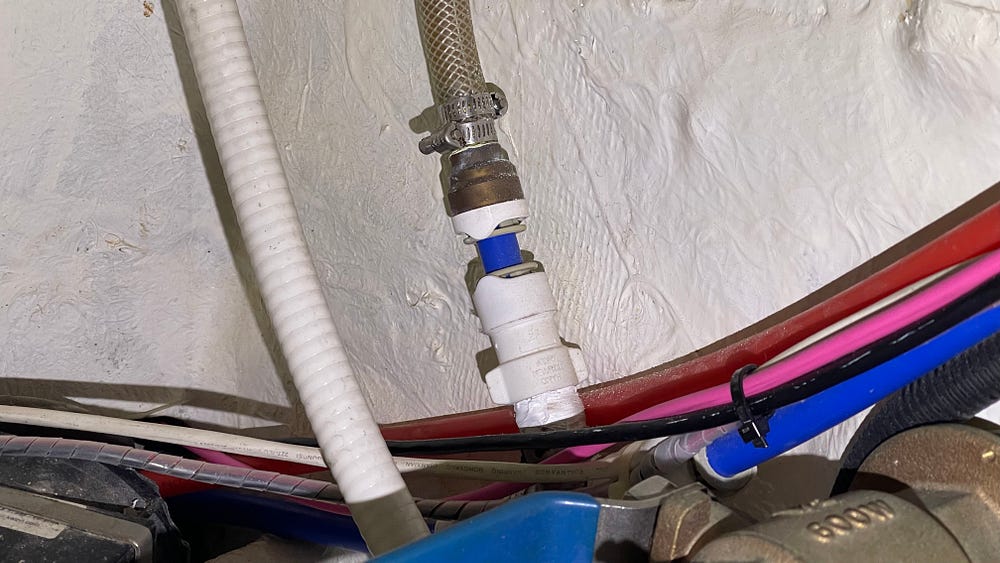
Step 2: Repair it. The frustrating thing about boats is that most jobs require a high degree of boat yoga and this one was no exception. What would probably take 15 minutes sitting at a table with things laid out in front of your turns into hours when you’re contorted into a cupboard, struggling to move and having to negotiate around existing pipes etc. Just pulling a hose off the joint takes several attempts and a lot of swearing.
Then you have to find the right parts. I needed a new 1/2 inch thread to a flanged nipple where the plastic pipe would slide over and be clamped on. The plumbers had a 1/2 inch threaded pipe to a nipple, but it was too small for the pipe. The chandlery had the correct nipple, but not the right thread for to attach to the 1/2 inch thread. Three visits and a bastardised attachment from a 1/2 inch thread, to a connector, to the nipple and I had something that would work. Of course none of them where in the desirable material (plastic). It’s less than ideal — now we’ve added two additional seals a.k.a. points of failure into the system, but at least it works — after pulling it apart again to fix a new leak in one of the new joints where I hadn’t added enough teflon tape.
Step 3: Add new jobs to the list. In the process of pulling various things apart, hunting for leaks and digging around in the bilges I found three more things that need attention. The float switch in the rear bilge has failed. The starboard rudder post is leaking slightly around the seal and several hose clamps need replacing. So despite having actually knocked a job off the list, the to do list is now longer than when we started. Such is boat life.
It was ultimately fortunate we came back to the marina as we received an email on Tuesday afternoon, “Can you be at the town administration office tomorrow at 9.30 to process your residence permits?” So now we’re in the system and our residence permits are underway which will allow us to stay in Montenegro for the length of our marina contract. Typically it’s 90 days in 180, but we’re now free to stay here until 1st of May.
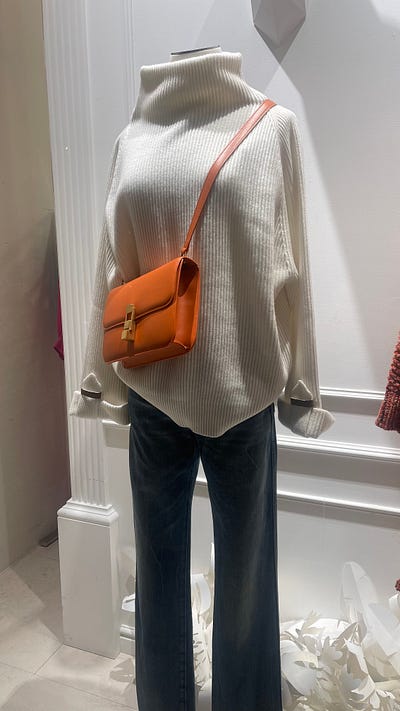
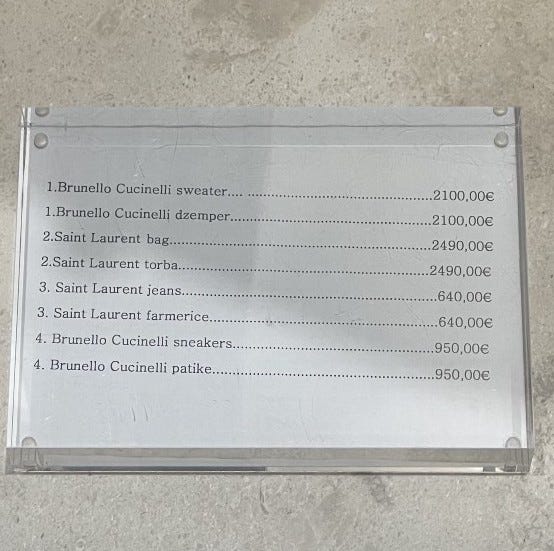
Beyond socialising, starting on the boat chores and relaxing we’ve also been doing some baking. Karina made Anzac Biscuits (our 9 years in the US is showing as we keep wanting to call them Anzac Cookies) and I tried my hand at fresh donuts. The Anzac Biscuits were a hit and we shared them with a few of the Aussie boats we know as well as the honorary Kiwis (the Americans Eric and Vandy who spent the last 6 years living there on and off). The donuts were OK for a first attempt but not yet good enough although they were better than the average donut you find here so that’s something.
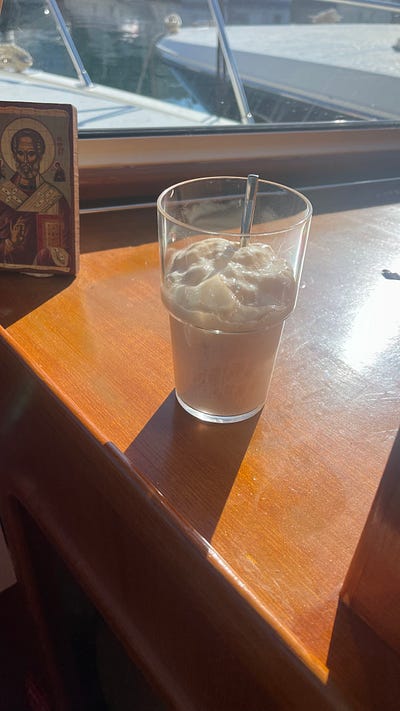
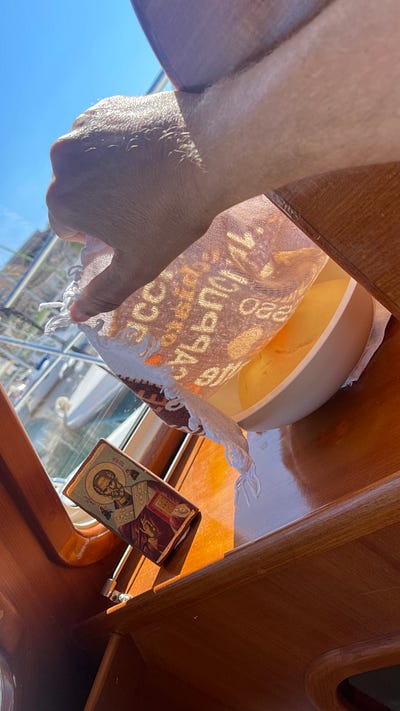
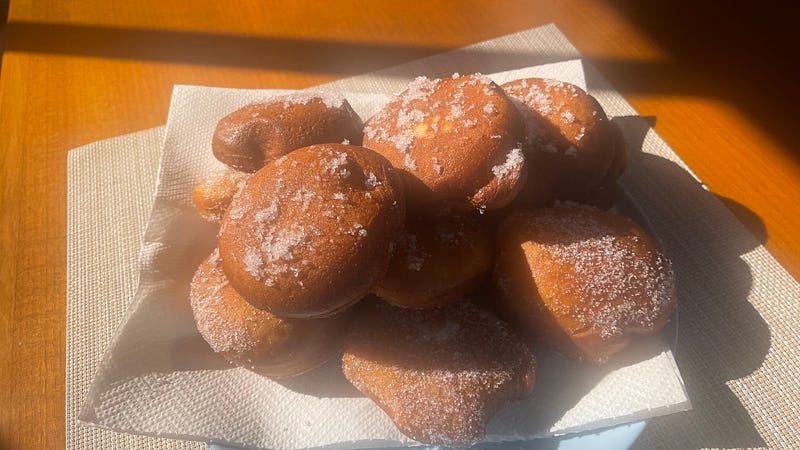
In any new place, things take time to work out. Where are the shops, what can you buy what can’t you buy. Some things are surprisingly universal. For example, plain flour is always packaged in a shade of blue, self-raising flour is always in a shade of red. They are called different things (plain flour, bread flour, classic flour or in the case of self-raising it could be cake flour or self-rising flour), but the colour seems to be consistent. Other things trip you up, for example here in Montenegro there appears to be no dairy industry — butter is €5 for a stick of cooking butter and milk is on the shelf (not the fridge) as there’s no fresh milk, only UHT. We also can’t find bacon — there’s pancetta (a close substitute for sure), but no classic strip bacon at all. Amongst everyone we meet the knowledge on what can be found where in what store is shared back and forth (“You won’t believe where we found x!”).
The last few days have had wonderful crisp, warm autumn days and we’re enjoying our time here and looking forward to the weeks ahead and hopefully shortening some of the items on the boat list!
Want to see where we are, or check where we’ve been? Check us out on NoForeignLand https://www.noforeignland.com/boat/matilda
Until next time,
Tim & Karina
